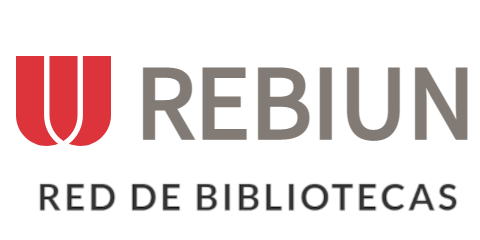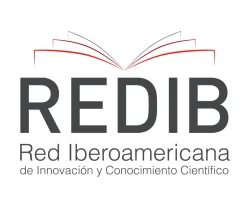Evidencia Empírica de la Ecoeficiencia del Consumo de Energía de 19 Empresas que en Abril de 2021 Integraban el Índice S&P/BMV IPC
Resumen
La presente investigación confirma que las empresas que mejoran su desempeño medioambiental mejoran su desempeño económico, al recopilar, analizar e interpretar información de 2018 a 2022 de 19 de las 35 emisoras bursátiles que en abril de 2021 integraban el Índice S&P/BMV IPC de la Bolsa Mexicana de Valores, mediante el cálculo de la “fórmula de ecoeficiencia” y la obtención del índice de ecoeficiencia del consumo de energía. Con ello, se pretende contribuir al desarrollo de un marco experimental de la Teoría de la Ecoeficiencia, mediante un estudio documental con los informes financieros y de sustenbilidad publicados por las mismas empresas.
Descargas
Citas
Al-Tuwaijri, S.A., Christensen, T.E. y Hughes, K.E. (2004). The relations among environmental disclosure, environmental performance, and economic performance: A simultaneous equations approach. Accounting Organization Society, 29(5), 447-471. doi:
https://doi.org/10.1016/S0361-3682(03)00032-1
Aragón-Correa, J.A., Hurtado-Torres, N., Sharma, S. y García-Morales, V.J. (2008). Environmental strategy and performance in small firms: a resource-based perspective. Journal of Environmental Management 86(1), 88-103.
Boada-Ortiz, A., Rocchi, S., y Kuhndt, M. (2012). Negocios y sostenibilidad: más allá de la gestión ambiental. Politécnico grancolombino.
Bolsa Mexicana de Valores (BMV) (2022). Índices principales. Recuperado de https://www.bmv.com.mx/es/indices/principales/
Bolsa Mexicana de Valores (BMV) (2022). Título Noveno del Reglamento Interior de la BMV. Recuperado de
https://www.bmv.com.mx/docs-pub/MARCO_NORMATIVO/CTEN_MNNB/TITULO%20IX.pdf
Cohen, M., Fenn, S.A. y Naimon, J. (1995). Environmental and financial performance: are they related? Washington, D.C.: Investor Responsibility Research Center (IRRC).
Corvo, H. (2021). Definición de la utilidad de operación. Lifeder. https://www.lifeder.com/utilidad-operacional/
Elkington, J. (1994). Toward the sustainable corporation: win-win-win business strategies for sustainable development. California Management Review, 36(2), 90-100.
Elsayed, K. y Paton, D. (2005). The impact of environmental performance on firms’ performance: static and dynamic panel data evidence. Structural Change and Economic Dynamics, 16(3), 395-412.
Feldman, S.J. Soyka, P.A. y Ameer, P. (1997). Does improving a firm´s environmental management system and environmental performance result in a higher stock price? The Journal of Investing, 6(4), 87-97.
Florida, R. (1996). Lean and green: the move to environmentally conscious manufactoring. California Management Review, 39(1), 80-115.
GRI (s.f.) Global Reporting Initiative.
https://www.globalreporting.org/media/gnelv4de/informe_divulgacion_gri.pdf
GRI (2006). Guía para la elaboración de memorias de sostenibilidad. Amsterdam, Holanda: GRI.
GRI (2023). Estándares GRI consolidados. https://www.globalreporting.org/how-to-use-the-gri-standards/gri-standards-spanish-translations/.
Hamilton, J. (1995). Pollution as news: media and stock market reactions to the toxic release inventory data. Journal of Environmental Economics and Management, 28(1), 98-113.
Heikkurinen, P., Young, .W., Morgan, E. (2019). "Business for sustainable change: Extending eco-efficiency and eco-sufficiency strategies to consumers," Journal of Cleaner Production, vol. 218, pp. 656-664, 2019/05/01/ 2019.
Jaggi, B., y Freeman, M. (1992). An examination of the impact of pollution performance on economic and market performance: pulp and paper firms. Journal of Business Finance and Accounting, 19(5), 697-713.
Klassen, R.D., y McLaughlin, C.P. (1996). The impact of environmental management on firm performance. Management Science, 42(8), 1199-1214.
Leal, J. (2005). Ecoeficiencia: marco de análisis, indicadores y experiencia. Chile: CEPAL.
Majumdar, S.K., y Marcus, A.A. (2001). Rules versus discretion: the productivity consequences of flexible regulations. Academy of Management Journal, 44(1), 170-179.
Maxime, D., Marcotte, M., y Arcand, Y. (2006). Development of eco-efficiency indicators for the Canadian food and beverage industry. Journal of Cleaner Production, 14(6), 636-648.
Menguc, B., Auh, S., y Ozanne, L. (2010). The interactive effect of internal and external factors on a proactive environmental strategy and its influence on a firm´s performance. Journal of business Ethics, 94(2), 279-298.
Molina-Azorín, J.F., Claver-Cortés, E., López-Gamero, M.D., y Tarí, J.J. (2009). Green management and financial performance: a literature review. Management Decision, 47(7), 1080-1100.
Müller, K., y Sturm, A. (2001). Standardized eco-efficiency indicators-report 1: concept paper. Basel, Switzerland: Ellipson
Murty, M.N., y Kumar, S. (2003). Win-win opportunities and environmental regulation testing of Porter hypothesis for Indian manufactoring industries. Journal of Environmental Management, 67(2), 139-144.
OCDE (2008). Sustainable manufacturing and eco-innovation: first steps in building a common analytical framework. DSTI/IND, 16/REV 1. Recuperado de
http://oecd.org/officialdocuments/publicdisplaydocumentpdf/?cote=DSTI/IND(2008)16&docLanguage=En.
Pache, María (2017). La teoría de la ecoeficiencia: efecto sobre la perfomance empresarial. Tesis doctoral de Economía Financiera y Contabilidad de la Universidad de Extremadura. España.
Porter, M.E. (1991). America´s green strategy. Scientific American, 264(4), 168-179.
Ramos, G. (2014). Definición de desempeño económico. https://economia.org /desempeno.php.
Schaltegger, S., y Synnestvedt, T. (2002). The link between “green” and economic success: environmental management as the crucial trigger between environmental and economic performance. Journal of Environmental Management, 65(4), 339-346.
Schmidheiny, S. (1992). WBCSD. Changing Course: A Global Business Perspective on Development and the Environment. MIT Press.
Sharma, S., y Vredenburg, H. (1998). Proactive corporate environmental strategy and the development of competitively valuable organizational capabilities. Strategic Management Journal, 19(8), 729-753.
Sturm, A., Müller, K., y Upasena, S.A. (2002). Manual for the preparers and users of eco-efficiency indicators. United Nations Conference on trade and Development (UNCTAD).
Shrivastava, P. (1995). The Role of Corporations in Achieving Ecological Sustainability. Academy of Management Review, 20(4), 936-960. doi: https://doi.org/10.5465/amr.1995.9512280026
S&P Global (2022). S&P Dow Jones Índices: Metodología de los índices.
https://www.spglobal.com/spdji/es/documents/methodologies/methodology-spbmv-indices-spanish.pdf
Wagner, M. y Wehrmeyer, W. (2001). The relationship between environmental performance and economic performance of firms and the influence of ISO 14001 and EMAS: an empirical analysis. Conference Proceedings of the 2001 Eco-Management and Auditing Conference. June, ERP Environmental, Shipley.
Walley, N. y Whitehead, B. (1994). It´s not easy being green. Harvard Business Review, 72(3), 46-52.
World Business Council for Sustainable Development (WBCSD) (1997). Environmental Performance and Shareholds Value. Conches-Guevara: WBCS
Derechos de autor 2024 Emma Lilia Fierros Pesqueira, Sergio Samuel Espinosa Guillen

Esta obra está bajo licencia internacional Creative Commons Reconocimiento 4.0.











.png)




















.png)
1.png)


